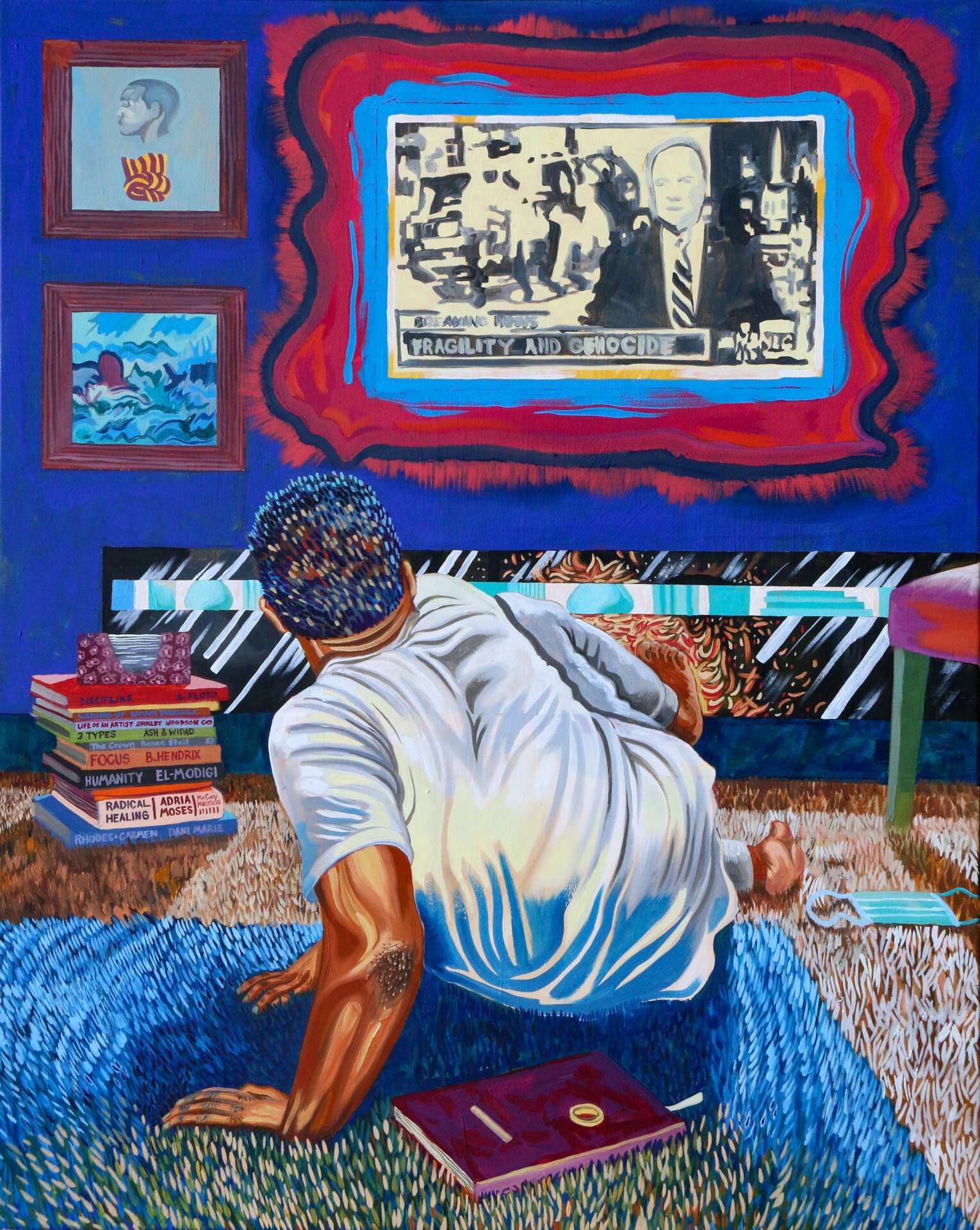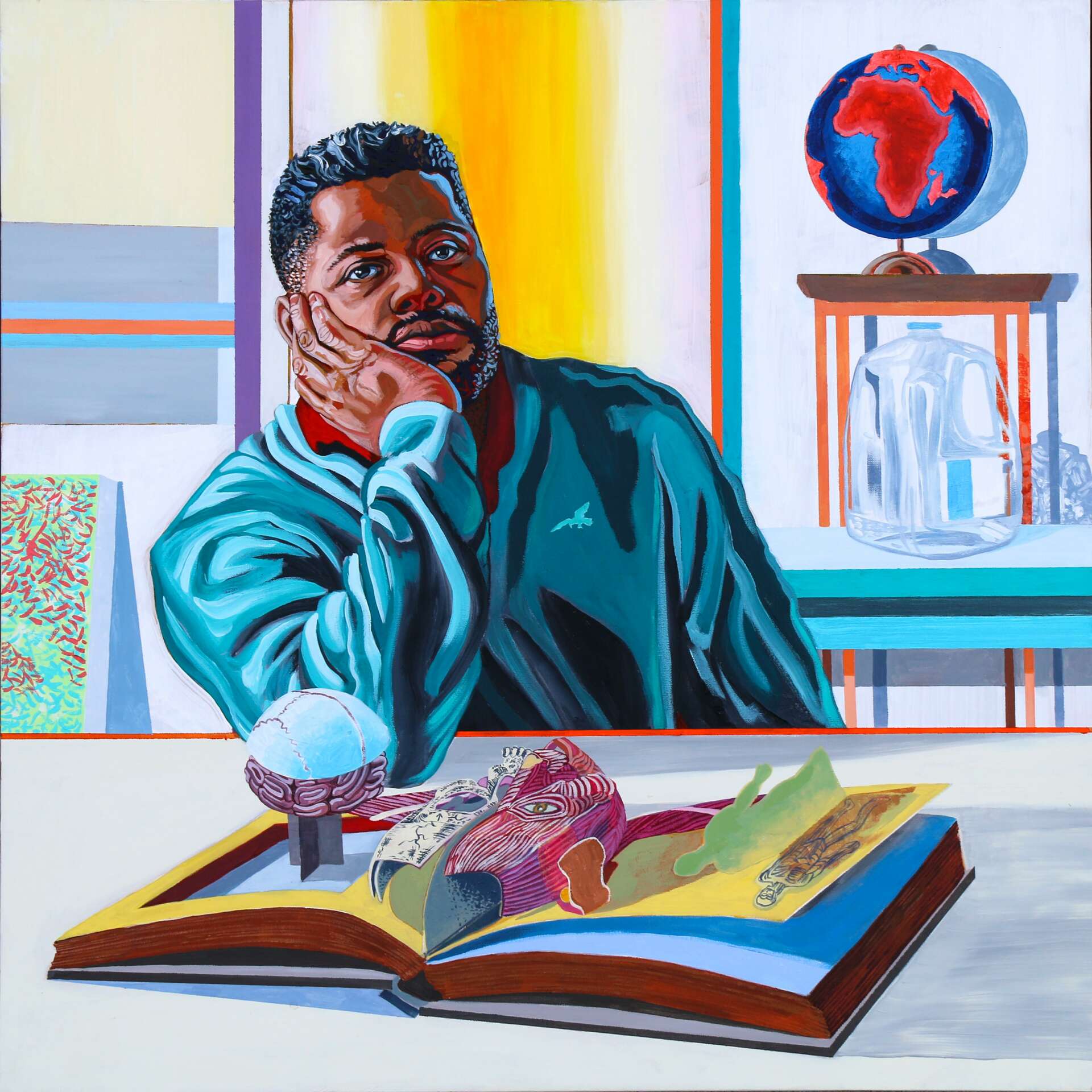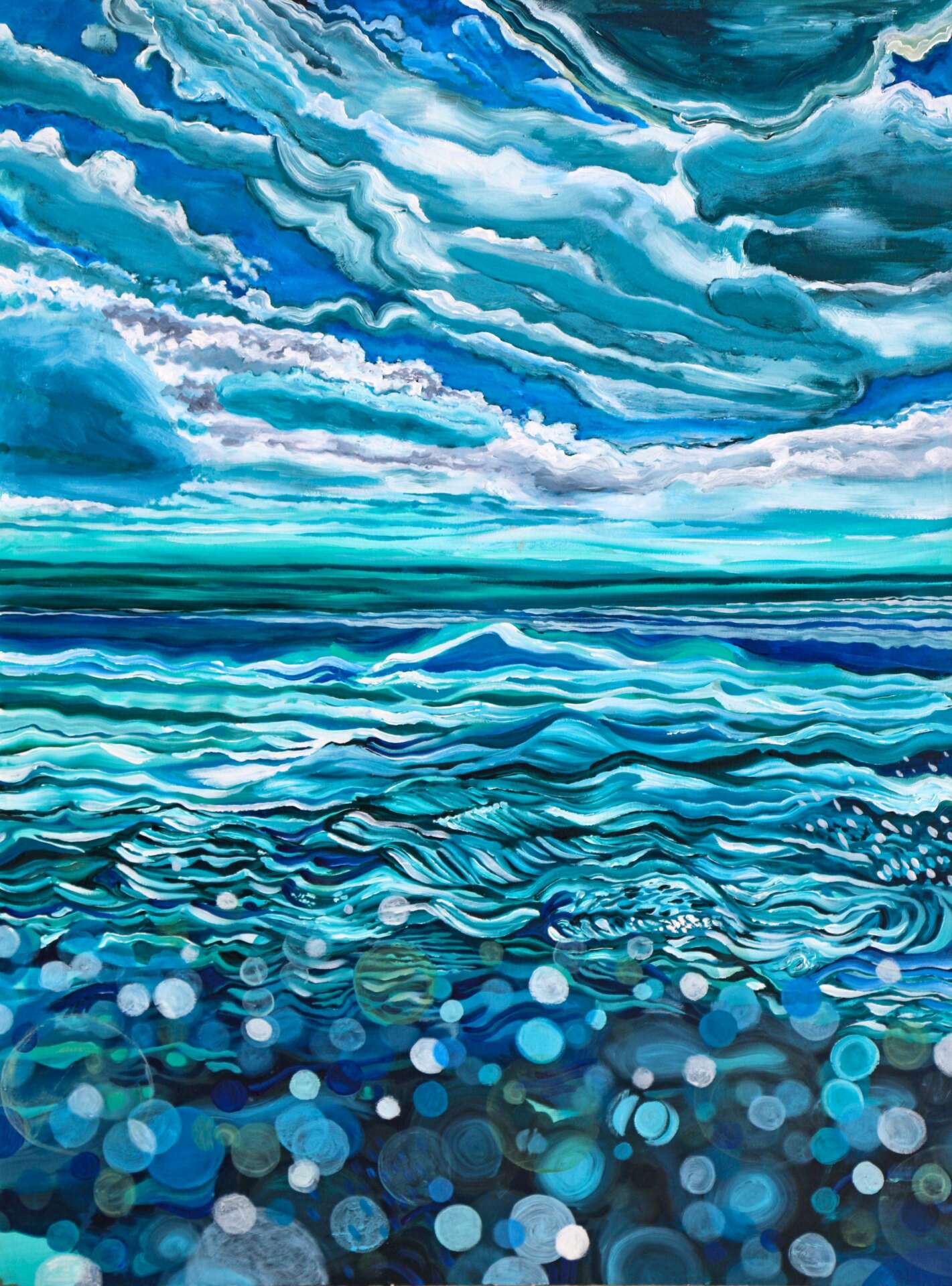Alright – so today we’ve got the honor of introducing you to Senghor Reid. We think you’ll enjoy our conversation, we’ve shared it below.
Senghor, looking forward to hearing all of your stories today. Can you talk to us about how you learned to do what you do?
I had great teachers and I tried to absorb everything they taught me throughout my time as a student in primary, secondary, and post-secondary education. One thing I could have done differently is to have served as an assistant to a professional artist after undergraduate study. I feel like I would have been more challenged as a young artist, especially when it came to my subject matter. At that time, I needed time for my art and mastery of materials to develop.
![]()

Great, appreciate you sharing that with us. Before we ask you to share more of your insights, can you take a moment to introduce yourself and how you got to where you are today to our readers.
Senghor Reid earned a BFA from the University of Michigan (Ann Arbor, MI); a Masters of Teaching in Art Education from Wayne State University (Detroit, MI) and attended the internationally recognized Marathon Program at the New York Studio School of Drawing, Painting and Sculpture (NY, NY). He is currently Chair of the Fine Arts Department at Cranbrook Kingswood Upper School (Bloomfield Hills, MI) and is a National Board Certified Visual Arts Educator. Reid is a practicing visual artist. He has received many awards including the Kresge Foundation’s, Kresge Arts in Detroit Visual Artist Fellowship prize and the prestigious Governor’s Award for Emerging Artist (Michigan). Reid’s work has been exhibited in the U.S. and abroad in galleries and museums including the Cranbrook Art Museum, Muskegon Museum of Art, Museum of Contemporary Art Detroit, Kentler International Drawing Space in New York, St. Catharine Museum in Canada and the Schomburg Center for Research in Black Culture in New York. His work is in many private, public, and corporate art collections.
Through a more effective observation of self, I use my interactions with nature as a vehicle for reflection, healing, and restorative practice. Specifically using water provides me with multiple pathways for attaining higher levels of personal awakening. I want to better understand water, as an object, element, resource, tool and commodity. Using drawing, painting, printmaking, and performance as primary vehicles of expression, water provides me with the ultimate subject matter. Water is a shapeshifter, always evolving out of itself and back into itself. It is still and in motion, reflective and transparent, pure and polluted. I intend for the subsequent narrative created by my work to inspire viewers to willingly engage water and evoke consideration of it as tool, force and sacred treasure. My goal is to provide a series of visual devices to facilitate the reintegration of our most important natural resource into our daily living and discourse.


What do you find most rewarding about being a creative?
The most rewarding aspect of being an artist is being able to engage and build community with other artists, arts professionals, collectors, and patrons. Being able to collaborate with others and constantly strengthening and expanding my professional network has been very rewarding.
![]()

In your view, what can society to do to best support artists, creatives and a thriving creative ecosystem?
Society is afraid of artists because artists tend to tell the truth. The truth is often scary for people who haven’t developed their ability to think creatively and outside of the box. This often leads to tension and conflict when society is faced with facts and images they weren’t prepared to process and understand.


Contact Info:
- Instagram: @senghorreid
- Facebook: Senghor Reid
- Linkedin: Senghor Reid
- Twitter: @SenghorReid
Image Credits
All images taken by Senghor Reid

